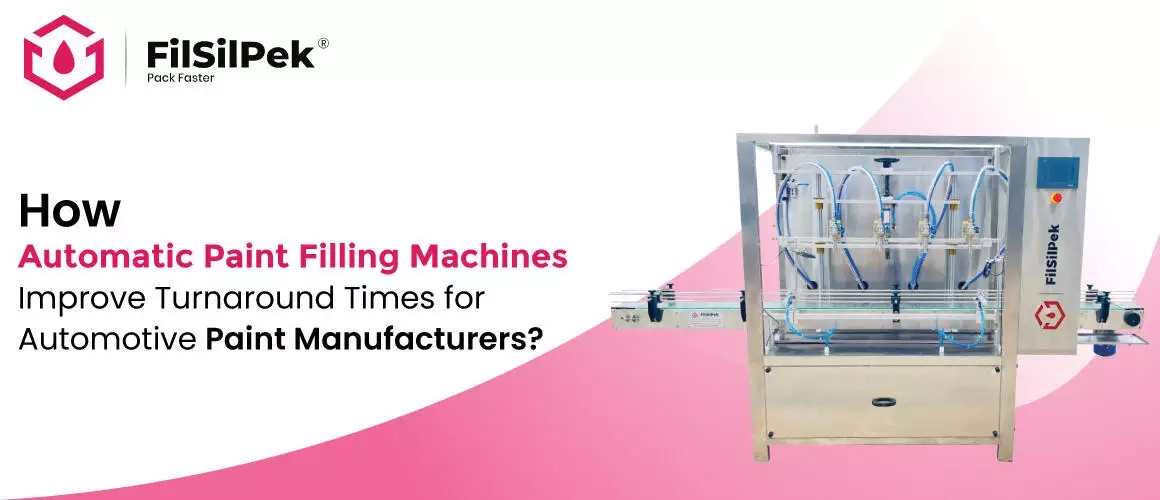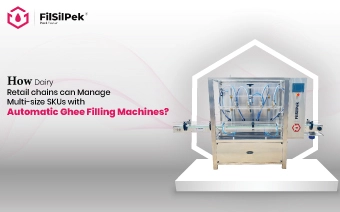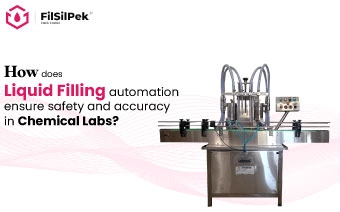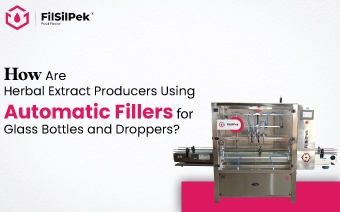How Automatic Paint Filling Machines Improve Turnaround Times for Automotive Paint Manufacturers?
Meeting production deadlines is one of the biggest challenges for automotive paint manufacturers. The demand for high-quality, precisely mixed, and consistently packaged paint continues to grow, leaving no room for inefficiencies in the production process. Manual filling methods often slow down operations, leading to bottlenecks, inconsistent fill levels, and increased labor costs.
Automatic paint filling machines have transformed this process, allowing manufacturers to achieve faster turnaround times without compromising quality. These machines streamline filling, reduce waste, and ensure uniformity in every batch, making them an essential investment for manufacturers looking to scale efficiently.
In this article, we will talk about how automatic paint filling machines help you improve the turnaround time of your automotive paint manufacturing business.
Challenges in Automotive Paint Filling
Before switching to automation, many paint manufacturers struggle with:
- Slow Production Speeds – Manual filling processes require multiple steps, from handling containers to measuring and filling, slowing down overall output.
- Inconsistent Fill Levels – Variations in volume can lead to product wastage and customer dissatisfaction.
- Spillage and Waste – Manual handling often results in spills, leading to higher material costs and additional cleanup time.
- Labor Dependence – Skilled workers are required for precise filling, but human errors and fatigue can impact efficiency.
- Downtime Due to Cleaning and Changeovers – Switching between different paint types or colors requires thorough cleaning, further delaying production.
How Automatic Paint Filling Machines Address These Issues?
1. Increased Speed and Efficiency
Automatic paint filling machines operate at high speeds, significantly reducing the time required to fill each container. Whether handling small batches or large-scale production, these machines ensure a continuous and consistent flow, meeting demand without unnecessary delays.
2. Consistent Fill Accuracy
Precision in filling is crucial for automotive paints, as incorrect quantities can lead to product returns or rework. Automatic filling machines are designed with advanced sensors and dosing systems that ensure each container receives the exact amount, minimizing variations and product loss.
3. Reduced Waste and Spillage
Automated systems minimize human contact with the product, reducing spills and material wastage. Many modern machines also come with integrated drip-free nozzles and self-cleaning features, further enhancing efficiency.
4. Lower Dependence on Manual Labor
By automating the filling process, manufacturers reduce the need for manual labor, allowing employees to focus on other critical tasks such as quality control and logistics. This not only improves productivity but also reduces errors caused by fatigue or inconsistent manual handling.
5. Faster Changeovers and Cleaning
Automotive paint manufacturers often need to switch between different colors or formulations. Traditional cleaning methods can be time-consuming, but modern automatic filling machines come with quick-changeover and self-cleaning mechanisms that reduce downtime. This allows manufacturers to switch between batches with minimal interruption.
Choosing the Right Automatic Paint Filling Machine
To fully benefit from automation, manufacturers need to choose machines that align with their production requirements. Some factors to consider include:
- Production Volume – Machines should match the scale of manufacturing needs, whether for small batches or high-volume production.
- Viscosity Handling – Automotive paints vary in viscosity; the machine should be capable of handling different formulations without clogging.
- Integration with Existing Systems – Compatibility with other production equipment ensures a seamless workflow.
- Customization Options – Some manufacturers require specialized features, such as explosion-proof designs for handling solvent-based paints.
The Competitive Advantage of Automation
Automating the paint filling process gives manufacturers a significant edge by increasing production efficiency and reducing operational bottlenecks. Faster cycle times, precise filling, and automated changeovers allow for higher output without compromising quality. This leads to improved order fulfillment rates and reduced production costs.
Beyond efficiency, automation ensures consistency in every batch, minimizing variations that can affect performance in automotive applications. Automated systems also enhance workplace safety by reducing manual handling of hazardous materials. With fewer errors and higher reliability, manufacturers can maintain stringent quality standards while scaling operations seamlessly.
Key Benefits of Automation:
- Higher Production Throughput – Faster filling speeds reduce overall cycle times.
- Improved Fill Accuracy – Consistent dosing minimizes product variations and rework.
- Lower Material Waste – Precision filling reduces overflows and spills.
- Reduced Downtime – Quick-changeover systems streamline batch transitions.
- Enhanced Safety – Less manual handling of chemicals improves workplace conditions.
- Seamless Integration – Compatible with existing production lines for smooth operations.
- Cost Optimization – Lower labor dependency and material wastage reduce operational expenses.
Putting it to the end
Enhancing production efficiency requires more than just speed—it demands precision dosing, minimal waste, and seamless batch transitions. Advanced automatic paint filling machines optimize throughput with high-accuracy dispensing, integrated self-cleaning systems, and reduced downtime for changeovers.
Upgrade your filling process to meet industry demands with higher consistency and lower operational costs. Contact [email protected] to discuss the right automation solution for your facility.
How dairy retail chains can manage multi-size SKUs with automatic ghee filling machines?
For dairy retail chains, offering ghee in various pack sizes has become …
How does liquid filling automation ensure safety and accuracy in chemical labs?
Chemical laboratories work with a broad spectrum of substances—acids, solvents, reagents, and volatile..
How Are Herbal Extract Producers Using Automatic Fillers for Glass Bottles and Droppers?
Herbal extract producers are under increasing pressure to meet demand…



